Grow Dragonfruit at Home? Absolutely! Imagine plucking a vibrant, exotic dragon fruit, bursting with flavor, straight from your own backyard. Sounds like a tropical dream, right? Well, it’s more attainable than you think! For centuries, dragon fruit, also known as pitaya, has been cultivated in Southeast Asia and Latin America, prized not only for its delicious taste but also for its striking beauty. Now, you can bring a touch of the tropics to your own home with these simple DIY tricks.
I know what you’re thinking: “Dragon fruit? That seems complicated!” But trust me, with a little know-how, growing dragon fruit at home can be a rewarding and surprisingly easy experience. In today’s world, where access to fresh, healthy produce is becoming increasingly important, cultivating your own food is not just a hobby, it’s a smart move. Plus, who wouldn’t want to impress their friends and family with their own homegrown dragon fruit?
This article is packed with practical, step-by-step instructions and insider tips to help you successfully grow dragonfruit at home, even if you’re a complete beginner. We’ll cover everything from choosing the right variety and preparing the soil to providing the necessary support and protecting your precious plants from pests. So, grab your gardening gloves, and let’s embark on this exciting journey together!
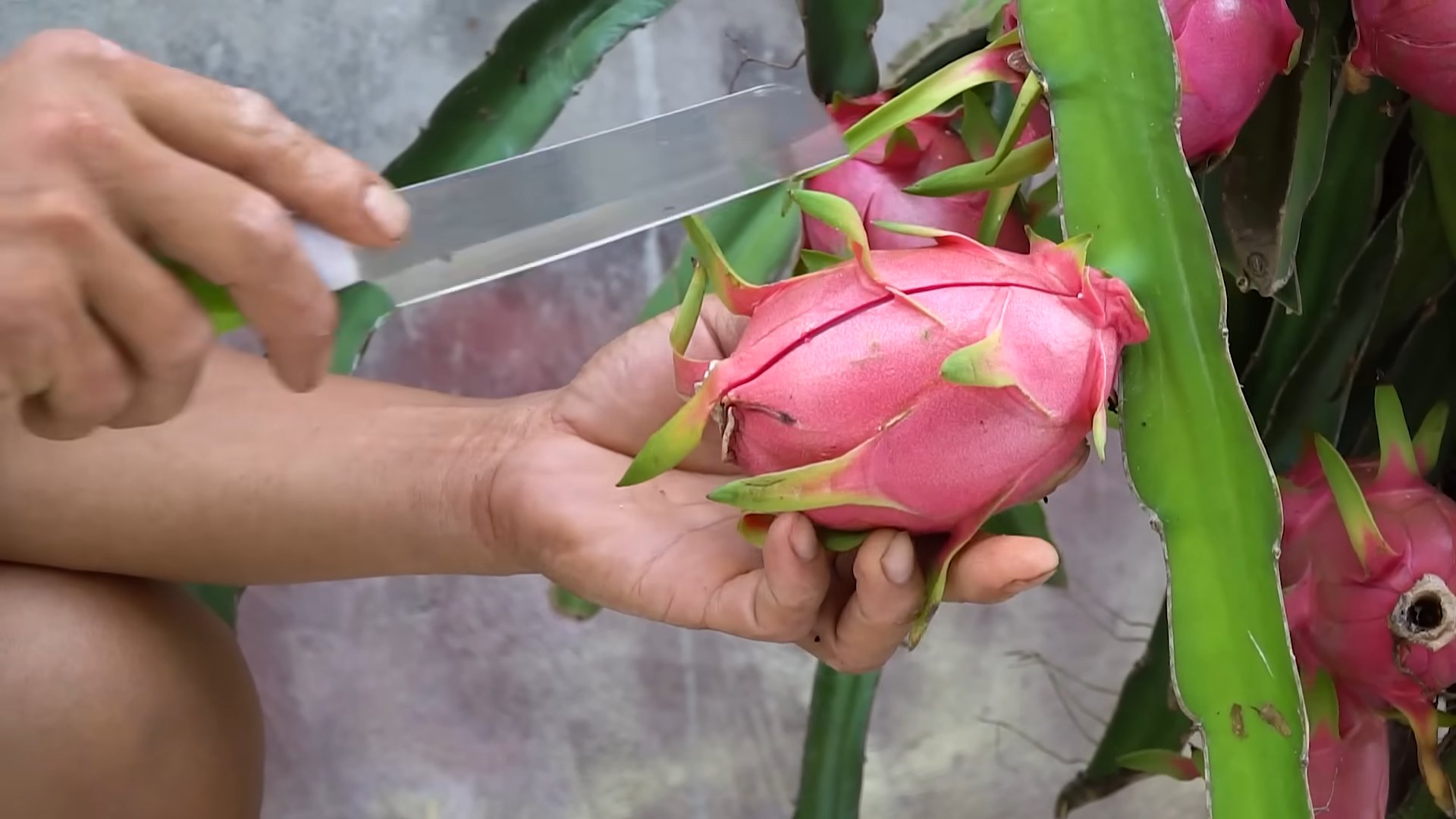
Grow Your Own Dragon Fruit: A Complete DIY Guide
Hey there, fellow plant enthusiasts! Ever dreamt of harvesting your own exotic dragon fruit? Well, dream no more! I’m going to walk you through everything you need to know to successfully grow dragon fruit right in your own backyard (or even indoors!). It might seem intimidating, but trust me, with a little patience and the right guidance, you’ll be enjoying delicious, homegrown dragon fruit in no time.
What You’ll Need: The Dragon Fruit Starter Kit
Before we dive in, let’s gather our supplies. Here’s a checklist of everything you’ll need to get started:
* Dragon Fruit Cutting or Seedling: You can purchase these online, from nurseries, or even get a cutting from a friend who already grows dragon fruit. Cuttings are generally faster to fruit.
* Large Pot (if growing in a container): Choose a pot that’s at least 24 inches in diameter and depth. Dragon fruit roots need room to grow!
* Well-Draining Soil: Dragon fruit hates soggy feet! A mix of cactus potting mix, perlite, and a little compost works wonders.
* Support Structure: These guys are climbers! You’ll need a sturdy trellis, post, or even a strong fence for your dragon fruit to grow on.
* Gardening Gloves: Protect your hands from those prickly spines!
* Watering Can or Hose: For, you guessed it, watering!
* Pruning Shears: To keep your dragon fruit plant happy and healthy.
* Slow-Release Fertilizer: To provide essential nutrients.
* Optional: Grow Light (if growing indoors): Dragon fruit needs plenty of sunlight.
Choosing Your Dragon Fruit Variety
Did you know there are different types of dragon fruit? They vary in skin color, flesh color, and taste. Here are a few popular varieties:
* White-fleshed varieties (e.g., ‘Hylocereus undatus’): These are the most common and have a mild, slightly sweet flavor.
* Red-fleshed varieties (e.g., ‘Hylocereus costaricensis’): These are sweeter and have a more vibrant color.
* Yellow-fleshed varieties (e.g., ‘Selenicereus megalanthus’): These are known for their exceptional sweetness and unique flavor.
Consider your climate and taste preferences when choosing a variety. Some varieties are more cold-hardy than others.
Getting Started: Planting Your Dragon Fruit
Okay, let’s get our hands dirty! Here’s how to plant your dragon fruit, whether you’re using a cutting or a seedling:
1. Prepare the Pot (for container growing): Fill your large pot with the well-draining soil mix. Leave a few inches of space at the top.
2. Plant the Cutting or Seedling:
* For Cuttings: Dip the cut end of the cutting in rooting hormone (optional, but it helps!). Plant the cutting about 2-3 inches deep in the soil. If the cutting is long, you can plant it deeper, but make sure at least one node (where leaves or aerial roots will emerge) is buried.
* For Seedlings: Gently remove the seedling from its container and loosen the roots slightly. Plant the seedling at the same depth it was in its original container.
3. Water Thoroughly: Water the newly planted dragon fruit until the soil is evenly moist.
4. Provide Support: Immediately place the support structure (trellis, post, etc.) near the plant. As the dragon fruit grows, you’ll need to gently tie it to the support.
Caring for Your Dragon Fruit: The Nitty-Gritty
Now that your dragon fruit is planted, it’s time to learn how to keep it happy and thriving.
Watering
Dragon fruit prefers to be watered deeply but infrequently. Let the soil dry out slightly between waterings. Overwatering can lead to root rot, which is a big no-no. During the growing season (spring and summer), you’ll likely need to water more often than during the dormant season (fall and winter).
* Check the Soil: Stick your finger about an inch into the soil. If it feels dry, it’s time to water.
* Water Deeply: Water until you see water draining from the bottom of the pot.
* Reduce Watering in Winter: Dragon fruit needs less water during the dormant season.
Sunlight
Dragon fruit loves sunlight! Aim for at least 6-8 hours of direct sunlight per day. If you’re growing indoors, a grow light can help supplement natural sunlight.
* Outdoor Growing: Choose a location that receives plenty of sunlight.
* Indoor Growing: Place your dragon fruit near a sunny window or use a grow light. Rotate the plant regularly to ensure even growth.
Fertilizing
Dragon fruit benefits from regular fertilization, especially during the growing season. Use a slow-release fertilizer formulated for cacti or succulents.
* Apply Fertilizer in Spring and Summer: Follow the instructions on the fertilizer package.
* Reduce Fertilizing in Fall and Winter: Dragon fruit needs less fertilizer during the dormant season.
Pruning
Pruning is essential for maintaining the shape of your dragon fruit plant and encouraging fruit production.
* Remove Dead or Damaged Growth: Prune away any dead, damaged, or diseased branches.
* Shape the Plant: Prune to encourage branching and a manageable shape. Dragon fruit typically fruits on new growth, so don’t be afraid to prune!
* Control Size: Prune to keep the plant within the desired size, especially if growing in a container.
Pollination
Most dragon fruit varieties are self-pollinating, meaning they can produce fruit without needing another plant for pollination. However, cross-pollination (pollinating with another variety) can often result in larger and better-tasting fruit.
* Hand-Pollination (if needed): If you’re not seeing fruit set, you can try hand-pollinating. Use a small brush to transfer pollen from the stamen (male part) of one flower to the pistil (female part) of another flower. The best time to hand-pollinate is at night, as dragon fruit flowers bloom at night.
Dealing with Pests and Diseases
Like any plant, dragon fruit can be susceptible to pests and diseases. Here are a few common problems and how to deal with them:
* Mealybugs: These tiny, white, cottony pests suck sap from plants. Treat them with insecticidal soap or neem oil.
* Scale: These small, armored insects also suck sap. Scrape them off with a fingernail or use insecticidal soap.
* Root Rot: This is caused by overwatering. Prevent it by using well-draining soil and watering properly. If you suspect root rot, repot the plant in fresh soil.
* Fungal Diseases: These can cause spots or lesions on the plant. Treat them with a fungicide.
Regularly inspect your dragon fruit plant for any signs of pests or diseases. Early detection is key to preventing serious problems.
Harvesting Your Dragon Fruit
The moment you’ve been waiting for! Dragon fruit typically fruits about 30-50 days after flowering. Here’s how to tell when your dragon fruit is ripe:
* Color Change: The skin will change from green to its mature color (red, pink, or yellow, depending on the variety).
* Slight Softness: The fruit will feel slightly soft to the touch, like a ripe avocado.
* Easy to Detach: The fruit should easily detach from the stem with a gentle twist.
To harvest, simply twist the fruit off the stem. Enjoy your delicious, homegrown dragon fruit!
Troubleshooting: Common Dragon Fruit Growing Problems
Even with the best care, you might encounter some challenges along the way. Here are a few common problems and how to address them:
* Plant Not Growing: Make sure your dragon fruit is getting enough sunlight, water, and fertilizer. Check the soil pH (it should be slightly acidic).
* No Flowers: Dragon fruit needs to be mature enough to flower (usually 1-2 years old). Ensure it’s getting enough sunlight and fertilizer. You might also need to hand-pollinate.
* Fruit Splitting: This can be caused by inconsistent watering. Try to water more regularly.
* Yellowing Leaves: This can be a sign of overwatering, underwatering, or nutrient deficiency. Adjust your watering and fertilizing accordingly.
Overwintering Dragon Fruit
If you live in a climate with cold winters, you’ll need to protect your dragon fruit from frost.
* Container Growing: If you’re growing in a container, you can bring the plant indoors for the winter. Place it near a sunny window or use a grow light.
* In-
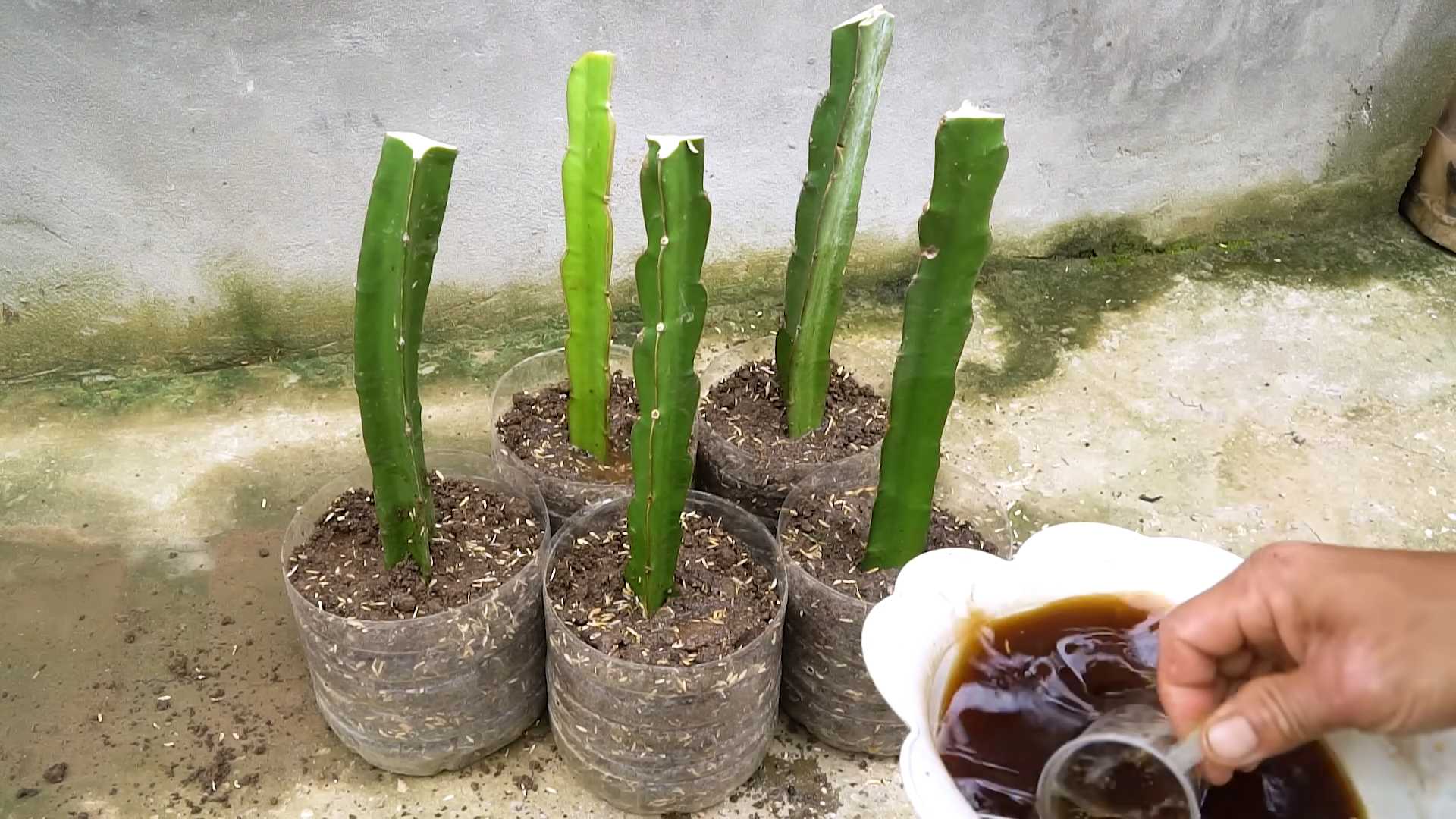
Conclusion
So, there you have it! Growing dragon fruit at home might seem like an exotic endeavor reserved for tropical climates, but with a little know-how and dedication, you can absolutely cultivate these vibrant and delicious fruits right in your own backyard or even indoors. This DIY trick isn’t just about saving money on store-bought dragon fruit; it’s about experiencing the unique satisfaction of nurturing a plant from seedling (or cutting!) to harvest. It’s about connecting with nature, learning new skills, and enjoying the unparalleled flavor of homegrown produce.
Why is this a must-try? Because the taste of a freshly picked, sun-ripened dragon fruit, bursting with sweetness and subtle floral notes, is simply unmatched by anything you can find in a supermarket. Plus, you have complete control over the growing process, ensuring your fruit is free from harmful pesticides and chemicals. You’re also contributing to a more sustainable lifestyle by reducing your carbon footprint associated with transporting fruit from distant locations.
But the benefits extend beyond just the fruit itself. The dragon fruit plant, with its striking, architectural form and nocturnal blooms, is a beautiful addition to any garden or indoor space. It’s a conversation starter, a source of pride, and a testament to your green thumb.
Looking for variations? Consider experimenting with different varieties of dragon fruit. There are numerous cultivars available, each with its own unique flavor profile, flesh color (from white to vibrant pink to deep red), and size. Some varieties are self-pollinating, making them easier to grow, while others require cross-pollination. Researching the best varieties for your climate and growing conditions is key to success.
Another variation is to explore different growing methods. While we’ve focused on growing in containers, you can also train your dragon fruit plant to climb a trellis or fence, creating a stunning vertical garden. You can also experiment with different soil mixes and fertilization schedules to optimize growth and fruit production.
Don’t be afraid to get creative! Add companion plants around the base of your dragon fruit to attract pollinators and improve soil health. Use recycled materials to build your trellis or support structure. The possibilities are endless.
We wholeheartedly encourage you to give this DIY trick a try. It’s a rewarding and enriching experience that will bring you joy for years to come. And most importantly, don’t forget to share your journey with us! We’d love to hear about your successes, your challenges, and any tips or tricks you discover along the way. Share your photos and stories on social media using [Your Hashtag Here] or leave a comment below. Let’s build a community of dragon fruit enthusiasts and inspire others to embark on this exciting adventure. Growing dragon fruit at home is more than just a hobby; it’s a passion, a connection to nature, and a delicious way to enjoy the fruits of your labor. So, grab your supplies, get your hands dirty, and get ready to experience the magic of homegrown dragon fruit!
Frequently Asked Questions (FAQ)
What kind of climate is best for growing dragon fruit?
Dragon fruit thrives in warm climates, ideally between 65°F and 80°F (18°C and 27°C). They are frost-sensitive and should be protected from freezing temperatures. If you live in a colder climate, you can still grow dragon fruit in containers and bring them indoors during the winter months. Ensure they receive plenty of sunlight, even indoors.
What kind of soil is best for dragon fruit?
Dragon fruit prefers well-draining soil that is slightly acidic to neutral (pH 6.0-7.0). A good potting mix for dragon fruit consists of a blend of cactus mix, perlite, and compost. This combination provides good drainage, aeration, and nutrients. Avoid heavy clay soils, as they can retain too much moisture and lead to root rot.
How often should I water my dragon fruit plant?
Water your dragon fruit plant deeply when the top inch of soil feels dry to the touch. Avoid overwatering, as this can lead to root rot. During the growing season (spring and summer), you may need to water more frequently than during the dormant season (fall and winter). Adjust your watering schedule based on the weather conditions and the moisture level of the soil.
How much sunlight does dragon fruit need?
Dragon fruit needs at least six hours of sunlight per day to thrive. They prefer full sun but can tolerate partial shade, especially in hot climates. If growing indoors, place your dragon fruit plant near a sunny window or supplement with grow lights. Insufficient sunlight can lead to stunted growth and reduced fruit production.
How long does it take for dragon fruit to fruit?
Dragon fruit plants typically start producing fruit within one to three years of planting, depending on the variety and growing conditions. Grafted plants may fruit sooner than plants grown from cuttings or seeds. Proper care, including adequate sunlight, water, and fertilization, is essential for promoting fruit production.
How do I pollinate my dragon fruit plant?
Most dragon fruit varieties require cross-pollination to produce fruit. This means you need to have two different varieties of dragon fruit plants and manually transfer pollen from one flower to another. Use a small brush to collect pollen from the stamen of one flower and transfer it to the stigma of another flower. Pollinate at night, as dragon fruit flowers bloom at night. Some varieties are self-pollinating, but even these may benefit from cross-pollination.
What kind of fertilizer should I use for dragon fruit?
Use a balanced fertilizer with a ratio of 10-10-10 or 20-20-20 during the growing season. Fertilize every two to three weeks. You can also supplement with organic fertilizers such as compost tea or worm castings. Avoid over-fertilizing, as this can burn the roots. Reduce or stop fertilizing during the dormant season.
How do I prune my dragon fruit plant?
Pruning is essential for maintaining the shape and health of your dragon fruit plant. Remove any dead, damaged, or diseased branches. Prune to encourage branching and improve air circulation. You can also prune to control the size and shape of the plant. Prune after the fruiting season.
What are some common pests and diseases that affect dragon fruit?
Common pests that affect dragon fruit include aphids, mealybugs, and scale insects. These pests can be controlled with insecticidal soap or neem oil. Common diseases include root rot and fungal infections. Prevent root rot by ensuring good drainage and avoiding overwatering. Treat fungal infections with a fungicide.
Can I grow dragon fruit from seed?
Yes, you can grow dragon fruit from seed, but it is a slower process than growing from cuttings. It can also take longer for plants grown from seed to produce fruit. To grow from seed, extract the seeds from a ripe dragon fruit, wash them, and dry them. Sow the seeds in a well-draining potting mix and keep them moist. Germination typically occurs within one to three weeks.
How do I know when my dragon fruit is ripe?
A ripe dragon fruit will have a vibrant color, depending on the variety. The skin will be slightly soft to the touch, and the “wings” or scales will start to dry out and turn brown. The fruit should also detach easily from the stem.
Is growing dragon fruit at home worth the effort?
Absolutely! While it requires some effort and attention, growing dragon fruit at home is a rewarding experience that allows you to enjoy fresh, delicious fruit and connect with nature. The unique flavor and beauty of homegrown dragon fruit make it well worth the investment of time and energy. Plus, you’ll have the satisfaction of knowing you grew it yourself!

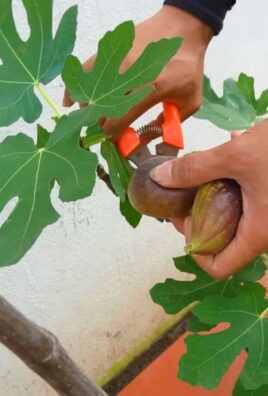
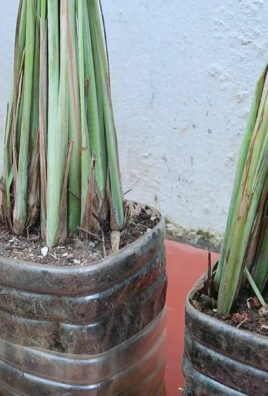
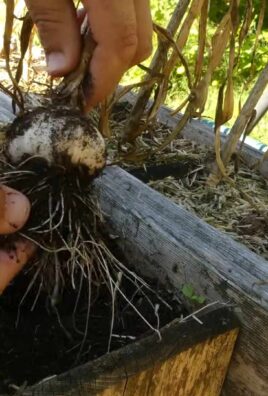
Leave a Comment